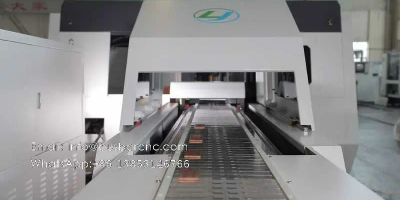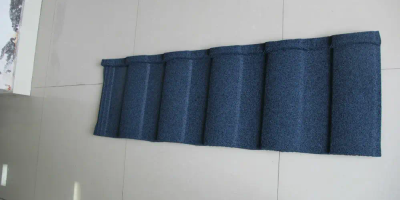introduction
Heavy haul technology is one of the development directions of railway technology, and locomotive reconnection is an important link to realize heavy haul technology. Locomotive reconnection means that two or more locomotives are connected together to form a reconnected locomotive. Domestic main-type locomotive brakes are all equipped with an average tube to realize the pressure control of the brake cylinder of the double-connected locomotive. According to the average pipe pressure received, after the flow is amplified through the action valve, the pressure of the supplementary brake cylinder is controlled. At present, there are mainly three types of brakes for domestic main-type electric locomotives: DK-2 type locomotive brake, CCBⅡ type locomotive brake and Eurotrol type locomotive brake. The average tube pressure control principle of these three types of brakes is They are all different, this paper will introduce and analyze the average tube pressure control principles of these three kinds of brakes, which will have a certain enlightening effect on the design of the next generation of locomotive brakes.
Control Principle of Average Tube Pressure of 1DK-2 Locomotive Brake
1.1 The average tube pressure control of the machine
As shown in Figure 1, when the DK-2 locomotive brake is in its own state, when it is automatically braking, the electronic distribution valve calculates the pre-control pressure value of the brake cylinder according to the decompression amount of the train pipe, and outputs the pre-control pressure value of the brake cylinder. Control pressure to the switching valve: At the same time, the air distribution valve also outputs the corresponding effect air cylinder pressure to the switching valve according to the decompression amount of the train pipe.
At this time, the switching valve outputs the pressure of the electronic distribution valve to the pre-control chamber of the action valve and the action pipe, while the air path from the action pipe to the double valve is cut off, and the action valve outputs a large flow pressure equal to the pre-control pressure of the brake cylinder. , after passing through the air-electric interlock valve, the pressure output by the action valve reaches the comparison valve, and the comparison valve outputs the greater pressure of the emergency bypass and the output pressure of the action valve to the I-frame brake cylinder, the 1-frame brake cylinder and the reconnection valve. valve. At this time, in the state of the machine, the reconnection valve is connected to the brake cylinder pipe and the average pipe, the pressure output by the action valve or emergency bypass control is output to the average pipe through the reconnection valve, the average pipe pressure is equal to the brake cylinder pressure, and the average Line pressure is controlled by an acting valve or emergency bypass that controls brake cylinder pressure.
When braking independently, the electronic distribution valve outputs the pre-control pressure of the brake cylinder corresponding to the individual brake command to the switch valve, and the switch valve outputs the pre-control pressure of the brake cylinder to the pre-control chamber of the action valve, and the output of the action valve is in line with the control valve. The large flow pressure equal to the pre-control pressure of the moving cylinder, after passing through the air-electric interlock valve, the pressure output by the action valve reaches the comparison valve, and the comparison valve outputs the greater pressure of the emergency bypass and the output pressure of the action valve to the second brake. cylinder, a brake cylinder and a reconnection valve. At this time, in the state of the machine, the reconnection valve is connected to the brake cylinder pipe and the average pipe, the pressure output by the action valve or emergency bypass control is output to the average pipe through the reconnection valve, the average pipe pressure is equal to the brake cylinder pressure, and the average Line pressure is controlled by an acting valve or emergency bypass that controls brake cylinder pressure.
1.2 Compensation machine average pipe pressure control
As shown in Figure 2, when the DK-2 locomotive brake is in the supplementary state, the supplementary machine receives the pressure of the average pipe. At this time, the reconnection valve connects the average pipe and the action pipe, and the brake cylinder pipe is cut off. The pressure of the averaging pipe enters the pre-control chamber of the acting valve through the acting pipe, and the acting valve outputs a large flow pressure equal to the pressure of the averaging pipe. The larger pressure of the output pressure of the bypass and action valves is sent to the I-frame brake cylinder, the II-frame brake cylinder and the reconnection valve. At this time, the brake cylinder pipe is cut off, and the pressure of the I-frame brake cylinder and the II-frame brake cylinder output by the supplementary machine is controlled by the average pipe pressure.
Control Principle of Average Tube Pressure of 2CCBⅡ Locomotive Brake
2.1 Local average tube pressure control
The CCBⅡ locomotive brake is a distributed network-controlled electro-pneumatic brake designed according to the modular design. There is a special 20CP module inside the brake to control the average pipe pressure. As shown in Figure 3, when the CCBⅡ locomotive brake is in the local state, the 20CP module controls the average pipe pre-control part to output the average pipe pre-control pressure to the average pipe pre-control pressure according to the train pipe decompression amount and/or the command of the brake handle. Action valve, averaging tube The action valve outputs air pressure with a large flow rate according to the pre-control pressure, and the output pressure is output to the averaging tube [3] after passing through the averaging tube shut-off valve (the averaging tube shut-off valve is open for this machine), and the averaging tube The pressure is independently controlled by the 20CP module.
2.2 Compensation machine average pipe pressure control
As shown in Figure 4, the CCBⅡ locomotive brake receives the pressure of the average pipe through the average pipe in the supplementary state, and the average pipe pressure enters the pre-control chamber of the action valve through the comparison valve, and the output of the action valve and the pressure of the pre-control chamber The equal large flow pressure is sent to the brake cylinder of the I frame and the brake cylinder of the II frame, so as to realize the function that the pressure of the supplementary brake cylinder is controlled by the average tube.
3Eurotrol locomotive brake average tube pressure control principle
3.1 Local average tube pressure control
As shown in Figure 5, when the Eurotrol locomotive brake is in its own state and automatically brakes, the electronic distribution valve calculates the pre-control pressure value of the brake cylinder according to the decompression amount of the train pipe, and outputs the pre-control pressure value of the brake cylinder To the switching valve: at the same time, the air distribution valve also outputs the corresponding working air cylinder pressure to the switching valve according to the decompression amount of the train pipe. At this time, the switching valve outputs the pressure of the electronic distribution valve to the comparison valve 2. Because it is in the state of the machine, the average pipe switching valve does not output the average pipe pressure to the comparison valve 2, and the comparison valve 2 outputs the pressure of the electronic distribution valve to the action valve and comparison valve 3. The action valve outputs a large flow pressure equal to the pressure of the pre-control chamber to the I frame brake cylinder and the II frame brake cylinder. The comparison valve 3 outputs the greater pressure of the electronic distribution valve and the individual brake pre-control pressure from the individual pre-control component to the pre-control chamber of the average pipe action valve, and the average pipe action valve outputs the average pipe pressure through the average pipe switching valve.
When braking alone, the individual pre-control part directly outputs the individual brake pre-control pressure to the comparison valve 3, and the comparison valve 3 outputs the individual brake pre-control pressure to the pre-control chamber of the average pipe action valve, and the average pipe action valve is switched through the average pipe The valve outputs the average pipe pressure.
The average tube pressure is controlled by separate average tube action valves and average tube switching valves.
Analysis of Control Principle of Average Pipe Pressure of Locomotive Brake
3.2 Compensation machine average pipe pressure control
As shown in Figure 6, when the Eurotrol locomotive brake is in the supplementary state, the averaging tube switching valve cuts off the output of the averaging tube action valve, and conducts the air path from the averaging tube to the comparison valve 2. At this time, the pressure of the averaging tube can be input to the comparison valve 2, and after passing through the comparison valve 2, it enters the pre-control chamber of the action valve and the comparison valve 3. The action valve outputs a large flow pressure equal to the pressure of the pre-control chamber to the I-frame brake cylinder and the I-frame brake cylinder, realizing the function that the pressure of the supplementary brake cylinder is controlled by the average pipe.
4 Summary of the advantages of each average tube pressure control principle
At present, the average tube pressure control principles of DK-2 locomotive brakes, CCBⅡ locomotive brakes and Eurotrol locomotive brakes have their own advantages:
(1) The average pipe pressure control of the DK-2 locomotive brake is directly completed by the brake cylinder, the average pipe pressure control is relatively simple, and there are fewer components involved in pressure control. As the length of the tube increases, the average tube volume becomes larger, and the pressure response of the average tube will slow down.
(2) The average tube pressure control of the CCBⅡ locomotive brake is controlled by a special module, the pressure control is more precise, and the average tube pressure control is completely independent from the brake cylinder, and the reliability is high. In addition, when multiple locomotives are reconnected, the pressure synchronization of the average tube is better.
(3) The average pipe pressure control of the Eurotrol locomotive brake is controlled by a special average pipe action valve and an average pipe switching valve, which is completely realized by the air circuit and valve components, and the control is relatively simple. In addition, due to the setting of a special averaging tube action valve, the pressure synchronization of the averaging tube is better when multiple locomotives are reconnected.




